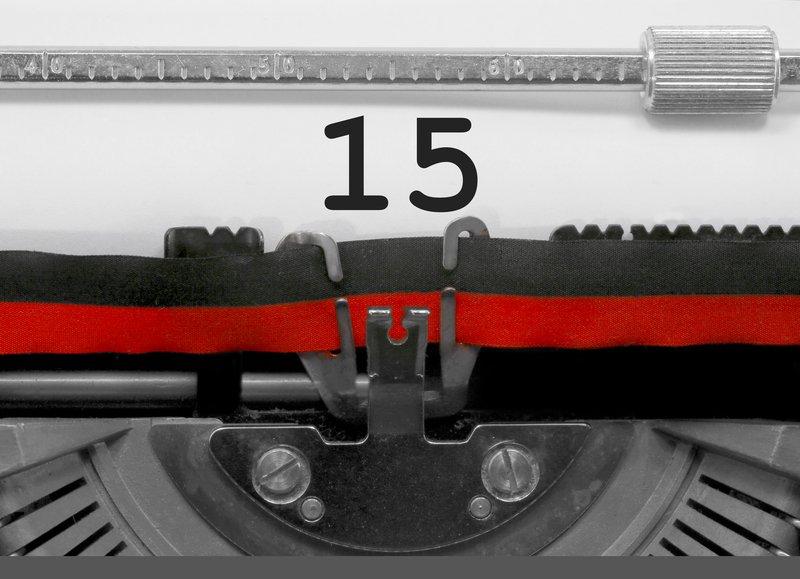Want to get on the property ladder? If you’re self-employed (a sole trader), you may be wondering if it’s even possible.
‘Will I be able to get a mortgage? Or will the bank be biased against me because I work for myself?‘
Well, while the process of getting a mortgage can feel more involved when you’re self-employed, the truth is that your employment status doesn’t — in and of itself — make it more or less likely that your application will be approved.
But you do have to understand what banks look for and make sure you’re prepared.
Here’s what you need to do to give your mortgage application the best chance of succeeding.
What do lenders look for when processing a mortgage application?
Whether a lender will approve your mortgage boils down to one thing: will you be able to repay it?
The mortgage application process is designed to find this out. The bank will look at your income. They’ll look at your expenses. And then they’ll work out whether you’d be able to comfortably afford the monthly repayments.
It’s worth noting that, prior to 2007, proving you could afford a mortgage was much easier than it is today.
The property market was booming, so banks were more willing to take risks. They lent more using less stringent criteria. And they also offered self-certification mortgages, which allowed you to borrow without having to prove your income at all.
Of course, we all know what happened next.
Lenders and borrowers alike abused the system. The property market crashed. And big banks failed, causing a global financial crisis. As a result, lending criteria have become much stricter. And the Financial Conduct Authority banned self-certification mortgages.
While banks apply their lending criteria to everyone equally, the practical realities of self-employment mean stricter rules have had a bigger impact on the self-employed.
Free Tide Business Bank Account + £50 Cashback!Simply open a free business current account to qualify + 12 months free transactions. Read our Tide review. Tide Instant Saver pays 4.07% AER (variable) - open one at the same time - rapid set up! |
An employee earns the same amount of money every month. They also get payslips and a P60 that show exactly how much they earn after tax.
By contrast, fluctuating monthly income comes with the territory when you’re self-employed. Proving to the bank that you can afford a mortgage is also more complicated because not all your income is profit. To find out how much you’ve actually earned, you have to wait until the end of the financial year, deduct expenses, and work out how much tax you owe.
But does this mean getting a mortgage when you’re self-employed is impossible?
Far from it.
It just means you need to be more organised and keep your finances in good shape. Which is good business practice, anyway.
Getting a mortgage when you’re self-employed: sole trader vs limited company
If getting a mortgage when you’re self-employed is a bit trickier than when you’re employed, how tricky it is also depends on your business setup.
As a sole trader, you are the business, and all the revenue you bring in belongs to you. This means proving your income to your bank is relatively straightforward.
In comparison, a limited company has a separate legal personality. And the revenue you bring in belongs to the company, even if you’re a one-man operation. So, here, proving you can afford your mortgage takes some more doing.
Here’s what the mortgage application process looks like for sole traders and limited companies.
Getting a mortgage as a sole trader
Requirements vary from one lender to another. But, as a sole trader, most banks will ask for copies of your SA302, a form which works out your income based on your latest self assessment tax return.
You can request an SA302 from HMRC through your Government Gateway account.
You can also download one from your accounting software if it’s HMRC-approved for Making Tax Digital. But check that your bank accepts SA302 forms you’ve printed yourself.
As a rule, banks won’t approve your mortgage unless you’ve been trading for at least 12 months. Many banks will ask for two to three years’ trading history to get a better sense of your income and your business’ health.
Alongside an SA302, your bank may also ask for:
- Up to three years’ worth of accounts, certified by an accountant
- Bank statements showing your income, or a profit and loss report
- Proof of your deposit
You’ll also need to provide details of your outgoings. These include:
- Household bills
- The cost of childcare or school fees
- Credit card debt
Getting a mortgage when you work through a limited company
The requirements if you do business as a limited company are similar to those of a sole trader. You’ll need to prove your income — usually through your SA302, bank statements, or payslips — and provide details of your outgoings.
Where it gets trickier is that, as we’ve already touched on, your company has a separate legal personality.
When you work through a limited company, the money you earn belongs to the company, not to you. To get money out, you’ll need to pay yourself a salary and dividends.
The problem with this is that your salary and dividend income doesn’t necessarily reflect how much you can afford.
Many people who work through limited companies take small salaries and the rest of their income as dividends, because this is more tax-efficient (the basic dividend tax is 8.75% (2022/3), whereas the basic income tax rate is 20% plus National Insurance contributions).
At the same time, how much money you pay yourself as dividends is a matter of personal preference — you could take all the profit out of the company every year, or a smaller portion that’s just enough to cover your living expenses.
If you do the latter, the bank may not regard your income as sufficient to meet their affordability criteria. This means you could either have your application rejected or be able to borrow less than you were hoping.
But that’s not really accurate. Any profit you haven’t taken from your company is still technically available for you to withdraw if you want to.
So what are your options?
1. Take more money out of your company
If your salary and dividend income isn’t enough to secure the mortgage you want, your first option is to increase your income by taking larger dividends in the two to three tax years before applying for a mortgage.
This has two advantages:
- It’s simple to do — you just pay yourself larger dividends
- The vast majority of banks work out affordability using salary and dividend income. So this option means you’ll have the widest pool of lenders possible to choose from
On the downside, larger dividends mean a bigger tax bill. If your dividend income puts you in the higher rate band, dividend tax will shoot up from 8.75% to a whopping 33.75%.
2. Find a lender who will consider your retained profits as income
Retained profits are profits which you haven’t withdrawn from your company. Some banks will include these with your salary and dividends when working out your income.
If you tend to withdraw only a small portion of your company’s profits each year, the inclusion of retained profits could make a huge difference to how much you can borrow. And because the income doesn’t have to leave your company to count, it won’t affect your personal tax liability.
The flipside is that very few banks take retained profits into consideration. So you’ll have fewer options when choosing a lender.
3. Find a lender who uses contract-based underwriting
This could be a good option if you’ve been in business for a year or less.
With contract-based underwriting, the bank will estimate your income by taking your day rate, multiplying it by the number of days you work in a typical week, and multiplying it again by 46 to 48 weeks to find out what you could earn in a year (they don’t use the full 52 weeks to account for holidays and gaps between projects).
The catch is that this option will only work if you’re a contractor — that is, you work on defined projects for a fixed period — or, possibly, if you service clients on retainer.
It won’t be an option if you sell products or services on an ad hoc basis.
4. Borrow with your significant other
While the bank will still want to make sure you can repay the mortgage, your financial situation may be less of an issue if your significant other is a full-time employee and you apply for the mortgage jointly. This is because one of you has a stable income coming in.
Not an option?
Consider a guarantor mortgage. Here, a family member agrees to take on the repayments if you’re no longer able to meet them.
Of course, things could get awkward should the worst happen. So make sure you set some ground rules if you go this route.
Getting a mortgage when you’re self-employed is doable. But you have to plan ahead…
In a recent survey, 71% said they think being self-employed makes it harder to get a mortgage.
But while it’s true that proving your income does require some extra steps, you can definitely become a homeowner without having to go back to the dreaded 9 to 5.
Provided you’re prepared:
- Lay the groundwork, before you apply for a mortgage:
- Work on improving your credit score by always paying your debts on time and not taking on too many at once. This will show the bank you’re responsible with money. As a rule, you shouldn’t use more than 50% of your total credit limit
- Try paying off any large debts, such as loans or credit card balances, before you apply for your mortgage. The less debt you’re in, the more likely your application is to succeed
- If possible, cut back on unnecessary expenses in the run up to your mortgage application. The bank will take expenses into account when working out how much you can afford to borrow. So fewer expenses will make you a better candidate
- Consider hiring an accountant. While your bank won’t necessarily require certified accounts, it pays to work with an accountant you trust. If your accounts are in order, it’ll be easier to provide the information the bank asks for quickly
- Being too tax efficient can work against you, so you might want to hold off in the run up to your mortgage application. The higher your taxable income, the more you’ll be able to borrow
- Put systems in place to demonstrate your business is in good shape. Long-term client contracts and a pipeline of future work will show the bank you’re in a strong financial position
Good luck!

|
Free Tide Business Bank Account + £50 Cashback!Simply open a free business current account to qualify + 12 months free transactions. Read our Tide review. Open a Tide savings account at the same time and earn an excellent 4.07% AER (variable) on your spare funds. |










